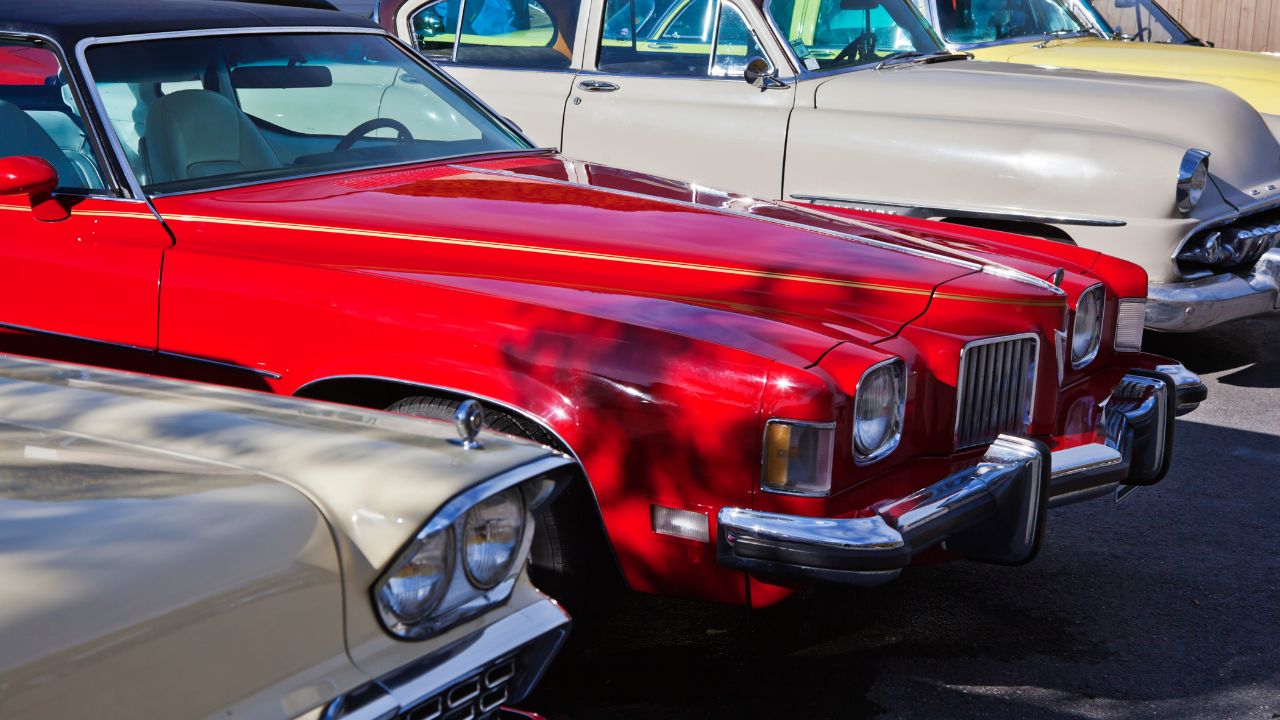
The '90s had a wonderful time for cars. Collectors' items are plentiful in the '90s. This article will highlight the hottest cars available, including the Ford Escort RS Cosworth and Toyota Supra. We will also review the Ford F-150 SVT Lightning NSX. These cars will drive you crazy, no matter how expensive they are.
Ford Escort RS Cosworth
Ford Escort RS Cosworth - This is a WRC special. It was produced in the mid to late 1990s with the intention of showing Subaru what they were missing in the World Rally Championship. The original Escort RS Cosworth produced 210bhp and cost $186,000, but this lowered price has led some enthusiasts to restore the car and run it again.
The Escort-RS Cosworth was originally designed for rallying but was also sold as a road-going model. Although the Escort RS Cosworth came at a high price, its performance was unmatched. The car was so powerful, insurance premiums went up to an exorbitant level. This car was notorious for turbo lag and it was extremely expensive. It was however sold in large numbers with more than 7,000 units being produced. This makes it a desirable collector's item.

Toyota Supra
The Toyota Supra's design underwent significant changes in the 1990s. Its interior was updated to incorporate new colors, including dark and shadow grays, and the steering wheels were redesigned. The dash now features 6.5-inch speakers with a larger center cover and speaker covers. An airbag was added to the steering wheel's center. A four-spoke steering rod with Supra script was created to replace the original three-spoke wheel.
The Toyota Supra was distinguished from its contemporary counterparts by many features, including the aerodynamic design. A new body style for the fourth generation Supra was developed. The pop-up headlamps were replaced with LED units and the rear wings became optional. This feature was a signature of the Supra. This Supra's version was stronger than its predecessor. And its turbocharged engine is still capable of putting out more power than its predecessors.
Honda NSX
The Honda NSX remained largely unchanged over the past decade. The 2001 model got a few cosmetic improvements, including a new kit that included fixed xenon halogen headlights. There were also changes to the suspension, and larger wheels and tires. The car was available in several colors. Additionally, owners could choose an interior color to match. The NSX was not able to live up the hype it got from its fans.
Honda NSX oversteered at high speeds and in cornering maneuvers due to its mid engine layout. To remedy this issue, Honda introduced the Type R and the Type S, which were designed for track driving. These cars were lighter and more powerful than the predecessors. The Type R as well as Type S had a Zero variant, which didn't include a navigation system, AC, nor a stereo.

Ford F-150 SVT Lightning
In the 1990s the Ford F-150 SVT Lightning luxury pickup truck was made using the second generation body style. It came standard with a naturally aspirated engine of 5.4-liters and an Eaton Supercharger. The engine produced 360 horsepower as well as 440 lb-ft torque. It was supported by a 4R100 auto transmission. The first generation of Lightnings was not factory equipped, but was available as an option. The second-generation Lightnings had a tubular lower grille and coil springs at the front. A leaf-spring package was available at the rear. There were also 31-mm antiroll bars.
The first generation truck featured twin beam coil springs at both the front and rear. A Monroe Formula GP-shock system was also available. The truck was lowered by one inch in front and 2.5 inches back. This small truck is ideal for those seeking speed and power.
FAQ
How do I fix my car for a hobby?
Why not make it a hobby if you're interested in cars? You could learn how to repair them, buy parts for them, sell them or just enjoy them. If you are looking for something more, it would be an excellent hobby.
However, it's not easy to turn this into a full-time career. It requires hard work and dedication. It will also require a large amount of investment.
It is best to avoid getting involved in car accidents unless you have good reasons.
What is the average time it takes to become a mechanic?
Expert mechanics take years of practice and extensive experience. Working under the guidance of a professional mechanic is the best way to learn how repair cars.
You will spend time in a workshop learning everything you can about cars. It is important to get familiar with the mechanics of cars and engineering.
And you'll also need to attend auto school.
The most important thing to do is start early. Don't wait until you're older to begin studying automotive technology. You can get certified as a mechanic by getting started right away!
What qualifications are necessary to become a truck driver mechanic?
While you may not have the formal qualifications to perform this job, your skills are well-rounded in working on engines and trucks. Your expertise is invaluable because you know how quickly and efficiently to diagnose problems.
A solid understanding of diesel technology is also a plus. This will help you understand the components that are needed to fix our vehicles.
Statistics
- According to the BLS, total auto technician employment is expected to exceed 705,000 by 2030. (uti.edu)
- Apprentice mechanics earn significantly less hourly than mechanics who have completed training, with a median wage of approximately $14.50 an hour, according to PayScale. (jobhero.com)
- The U.S. Bureau of Labor Statistics (BLS) reports that the job outlook for automotive service technicians and mechanics is expected to decline by 4% from 2019 to 2029. (indeed.com)
External Links
How To
How to be an Automotive Technician
An automotive technician provides repair services and maintenance to vehicles. He/she works at automotive shops, garages or service centers. He/she helps customers fix their cars, trucks, motorcycles, ATVs, boats, lawn mowers, snowmobiles, tractors, trailers, farm equipment, planes, helicopters, jet skis, watercraft, bicycles, motorcycles, scooters, golf carts, etc. An automotive technician must have the ability to quickly diagnose and fix problems.
An associate degree from a vocational school is required for anyone who wishes to become an automotive technician. After completing the program, he/she must take the National Institute for Automotive Service Excellence certification exam. ASE stands for American Society of Mechanical Engineers. There are two parts to the ASE certification exam. One section tests mechanical knowledge; the second section tests practical skills. To take the test, you must visit one of the approved testing locations. You can find these locations online or through your local automobile dealer.
After passing the exam, a candidate must take a state exam before being licensed as an automobile technician. This process can vary depending on where the applicant lives. Some states require that candidates attend training courses, while others permit them to learn independently. Some states issue licenses to technicians as soon as they get their license. Others wait until they have worked at least six months as an automotive technician.
To become an automotive technician, one must apply at a local dealership. Once hired, most new employees start out working as apprentices. Apprenticeships typically last three years. During this time, a student learns how to perform basic repairs, such as changing oil, adjusting brakes, replacing tires, cleaning spark plugs, inspecting engine compartments, and performing routine maintenance. Some students are taught how to repair engines and replace transmission fluids. Most schools offer classes during regular business hours. Some schools also offer evening classes when needed.
When a student has completed his/her apprenticeship, they become a journeyman. Journeymen typically spend four to five years learning how to install major systems, such as transmissions, differentials, steering gear, suspensions, and drive shafts. They also learn to perform complex repairs, such as remanufacturing engines, rebuilding transmissions, and troubleshooting electrical components. Many employers prefer to hire Journeymen because they understand the job well.
Candidates who pass the required exams are eligible for a license. According to the Bureau of Labor Statistics in 2010, nearly 1.7 Million automotive mechanic jobs were available. That number was expected to grow by 18 percent from 2009 to 2020. Candidates who decide to open their own business should be prepared to invest thousands in equipment and supplies.
There are many factors that affect the salary of an automotive technician, such as where they live, their education and experience. On average, a jobless person could expect to earn $20,000 annually. An individual with a high school diploma can earn about $21,000 per annum. Earnings for those with an associate's diploma are approximately $24,000/year. Technicians with a bachelor's degree earn about $27,000 per annum. Masters' degree holders earn around $32,000 per annum. Salary increases are common, so a professional who earns less than $30,000 now could reasonably expect to earn $40,000 or more in just a few years.